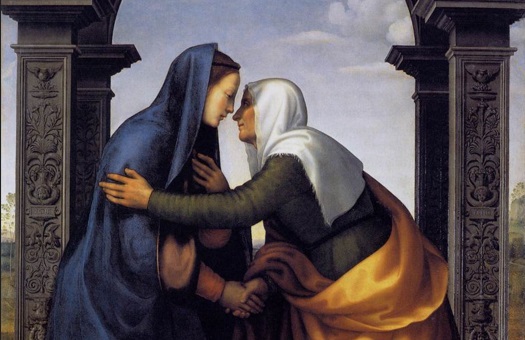
The Year of Two Easters
Christ is risen! Truly he is risen!
Χριστός ἀνέστη! Ἀληθῶς ανέστη! (Greek)
Христос воскрес! Воїстину воскрес! (Ukrainian)
A number of years ago I experienced the joy and excitement of an Easter Vigil in a Ukrainian Orthodox cathedral. For many weeks my Eastern Christian friends awaited the end of their strict penitential practices and eagerly anticipated the start of what was to be a vibrant liturgy.
In the darkness of night we processed around the cathedral walls three times until the priest stopped at the doors of the church. He knocked once, and the doors did not open. He knocked again and still was not permitted into the church. Finally, after knocking a third time, the doors of the church opened wide and the priest cheered out in Ukrainian “Christ is risen!” At once the many people standing around him responded “Truly he is risen!” and the bells of the cathedral rang while people cheered and celebrated. The Easter celebrations had begun.
As a Roman Catholic, the entire experience was all very moving for me – the rich vestments of the clergy, the gilded icons and the sweet smells of incense. But more striking was that our Easter celebrations were well over a month later than when I celebrated Easter in the Catholic Church.
While the bishops of the early Church agreed upon a common date for Easter at the First Council of Nicea in 325, later divisions in the Church and calendar changes left us with varying dates for Easter. The Council of Nicea set the date of Easter as the Sunday after the first full moon following the March equinox.
All was well until the Christian Church experienced a series of tragic conflicts between its Eastern and Western members that culminated with the Great Schism, or division, of the two Churches in 1054. Further divisions arose when the Julian Calendar was reformed and a new calendar implemented in 1582 by Pope Gregory XIII. Ironically, the calendar was reformed so as to keep the date of Easter closer to the March equinox.
The consequences of this adjustment did not bode well for Christian unity. Eastern Christians continued to observe the Julian calendar whereas their Western brothers and sisters adhered to the new Gregorian Calendar. The result of which is the frequent celebration of Easter on two different Sundays. (There are certain years, such as 2014, when the two Churches celebrate Easter on the same Sunday.)
Although attempts have been made to set a common date for Easter, Christians continue to celebrate the Resurrection according to their respective calendars. Some note that this variance is striking, as we commemorate the heart and essence of Christianity on Easter: the Resurrection of Jesus. If we seek to proclaim to all people the life-giving message of Easter, should we not also celebrate this day as one?
For now, however, all of us at Novalis wish our Eastern Christian friends a happy and holy Easter! Christ is Risen!
-Don Beyers

